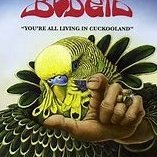Fish Feed - Good Brand And Price
-
Recently Browsing 0 members
- No registered users viewing this page.
-
Topics
-
-
Popular Contributors
-
-
Latest posts...
-
1
Report Illegal Street Race Sparks Fury and Chaos
a nationwide police crackdown Now why did I not think of that - the police doing their job 🤣 -
26
-
46
Health Thai Activist Proposes Sex Ban for Under-22s to Tackle HIV Surge
This would definitely work and be easy to police. -
2
Crime Illegal Chinese Cosmetics Factory Raided – 15 Chinese Nationals Detained, Plant Shut Down
Our Tristan Cior products are totally original and gives you a bonus suntan for free 🤔 -
2
Economy Thai Airways Snubs Direct US Flights Despite Safety Rating Boost
Strange question. The safety upgrade is about safety procedures in Thailand, following maintenance and documentation rules etc. Not connected to actual flight plans. Getting permission for a certain route is a separate procedure. -
26
Crime Man Beaten to Death by Nephew & Friends After Confrontation Over Cannabis Use
A classic post from someone that has absolutely zero comprehension of what they're talking about. Dope has been smoked billions of times (obviously an underestimate). Show us some data that links dope to violence.
-
-
Popular in The Pub






.thumb.jpeg.d2d19a66404642fd9ff62d6262fd153e.jpeg)






Recommended Posts
Create an account or sign in to comment
You need to be a member in order to leave a comment
Create an account
Sign up for a new account in our community. It's easy!
Register a new accountSign in
Already have an account? Sign in here.
Sign In Now